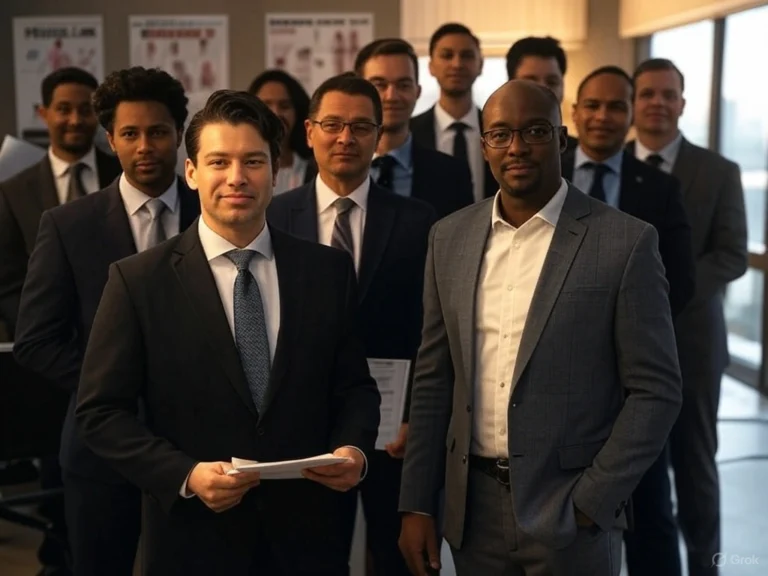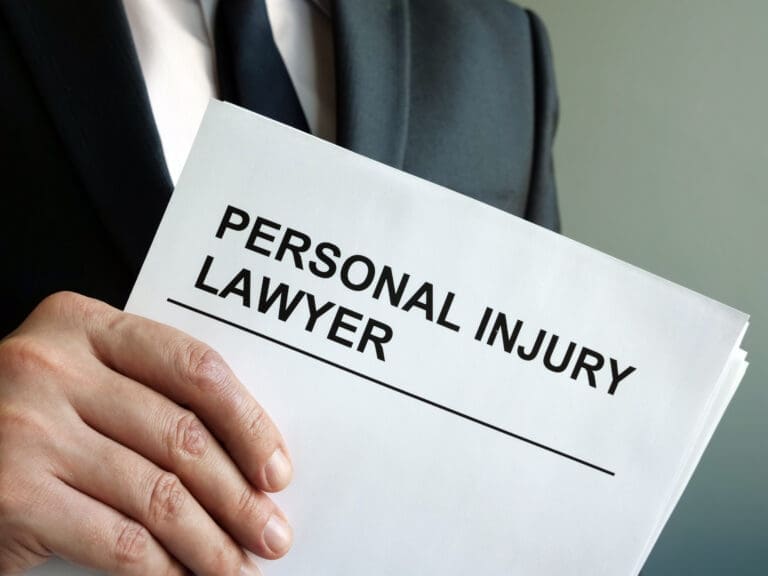
The American justice system prides itself on the principle that individuals are innocent until proven guilty beyond reasonable doubt. Yet, the sobering reality of criminal appeals success rates reveals a system where overturning wrongful convictions remains an arduous, uphill battle. The complex process of challenging a conviction through appellate procedures presents formidable obstacles for those seeking to establish their innocence after the gavel has fallen.
The statistical landscape paints a stark picture: federal criminal appeals succeed at approximately 6.9%, while state-level appeals fare slightly better at around 15%. These figures illuminate the extraordinary challenge faced by individuals navigating the post-conviction legal landscape. The judicial system, designed with multiple safeguards to prevent errors, nonetheless produces outcomes that sometimes require correction through the appellate process.
Justice demands precision. When the system falters—whether through procedural errors, misapplied law, or genuine factual innocence—the appellate courts stand as the constitutional bulwark against permanent injustice. Understanding the mechanisms, limitations, and strategic approaches to criminal appeals becomes essential for those seeking to overturn a condena injusta.
The Fundamental Nature of Criminal Appeals
Criminal appeals represent a distinctly different legal proceeding than the original trial. Unlike trials, which focus primarily on factual determinations, appeals center on questions of law and procedure. The appellate court does not retry cases or reassess witness credibility. Instead, it examines the trial record for legal errors that may have influenced the outcome.
This limitation forms the foundational challenge in overturning convictions. The appellate court accepts the factual findings established at trial unless they completely lack evidentiary support. This deference to trial courts stems from recognition that trial judges and juries directly observe witnesses and evidence, positioning them to make better factual determinations than appellate judges reviewing cold transcripts. The presumption of correctness granted to trial proceedings creates a substantial hurdle for appellants seeking reversal.
Appellate review operates within strict boundaries. The court typically considers only issues raised and preserved during trial through proper objections or motions. This “preservation requirement” means that potential errors not objected to at trial generally cannot form the basis for appeal, regardless of their significance. Some jurisdictions recognize exceptions for “plain errors” that create substantial miscarriages of justice, but these exceptions apply narrowly and infrequently. This constrained framework explains why many seemingly promising appeals ultimately fail to secure relief.
Statistical Reality: Federal and State Appeal Success Rates
The raw data regarding criminal appeal outcomes reveals the extraordinary difficulty of overturning convictions. According to U.S. Justice Department statistics, federal criminal appeals succeed at a rate of approximately 6.9%. This percentage represents cases where appellate courts find sufficient legal error to reverse or remand convictions. The overwhelming majority of federal convictions—over 93%—remain intact after appellate review.
State court appeals show marginally better prospects for appellants. The Bureau of Justice Statistics reports that nearly 15% of state-level criminal appeals nationwide succeed in securing some form of relief. This slightly higher success rate may reflect differences in state procedural rules, varying quality of trial representation, or differences in how aggressively certain prosecutorial offices defend convictions on appeal. Even with this relatively improved percentage, the fact remains that approximately 85% of state criminal appeals fail to overturn the original outcome.
The success rate varies significantly based on case type and jurisdiction. Bankruptcy appeals show the highest reversal rate at approximately 24.4%, while administrative appeals succeed only about 7.8% of the time. This variance reflects the different legal standards, procedural complexities, and judicial attitudes that predominate in different categories of cases. Some jurisdictions, such as the Fifth Circuit Court of Appeals, have particularly low reversal rates, while others may demonstrate greater willingness to overturn trial court decisions.
Grounds for Overturning a Wrongful Conviction
The law recognizes specific grounds upon which convictions may be overturned, creating a structured framework that both enables and constrains appellate relief. The most common basis involves procedural or legal errors that affected the trial’s fundamental fairness. When a judge incorrectly instructs a jury on the law, improperly admits or excludes critical evidence, or denies constitutional protections, appellate courts may find sufficient reason to vacate the conviction.
Constitutional violations frequently provide the strongest grounds for reversal. Fourth Amendment violations concerning improper searches and seizures, Fifth Amendment issues regarding self-incrimination, Sixth Amendment guarantees of effective counsel and confrontation rights, and Fourteenth Amendment due process concerns all represent potentially viable paths to appellate relief. These constitutional errors generally receive less deferential review than ordinary trial errors, reflecting their fundamental importance to the justice system’s integrity.
Newly discovered evidence, particularly DNA evidence that conclusively establishes innocence, represents another critical avenue for overturning wrongful convictions. However, courts apply stringent standards to such claims. The evidence must typically be genuinely new (not merely previously unused), materially relevant to guilt or innocence, and sufficiently compelling that it would likely produce a different outcome at trial. Additionally, the defendant must demonstrate diligence in attempting to discover the evidence earlier. These strict requirements explain why even compelling new evidence sometimes fails to secure relief through standard appellate channels, necessitating additional avenues like innocence projects or executive clemency.
Ineffective Assistance of Counsel Claims
Among the most frequently raised grounds for appeal, ineffective assistance of counsel claims allege that a defendant’s trial attorney performed so inadequately that the representation violated Sixth Amendment guarantees. The Supreme Court established the controlling standard in Strickland v. Washington, requiring defendants to prove both that counsel’s performance fell below an objective standard of reasonableness and that this deficient performance prejudiced the defense sufficiently to undermine confidence in the outcome.
This two-pronged test poses formidable challenges. Courts presume that counsel’s performance falls within the wide range of reasonable professional assistance, requiring appellants to overcome a strong presumption that counsel’s conduct constituted sound trial strategy. Even when deficient performance can be established, proving prejudice requires demonstrating a reasonable probability that, but for counsel’s errors, the result would have been different. This standard deliberately sets a high bar to prevent routine second-guessing of trial counsel’s tactical decisions.
Common ineffective assistance claims include failure to investigate potentially exculpatory evidence, failure to call crucial witnesses, failure to cross-examine prosecution witnesses effectively, failure to object to inadmissible evidence, and failure to present available defenses. Appellate success on these claims typically requires demonstrating that counsel’s failures stemmed not from strategic choices but from negligence, incompetence, or lack of preparation. Courts rarely find both prongs of the Strickland test satisfied, contributing to the low overall success rate of criminal appeals.
Prosecutorial and Judicial Misconduct
Prosecutorial misconduct represents another potential basis for overturning wrongful convictions. When prosecutors withhold exculpatory evidence from the defense (Brady violations), present false testimony, make improper inflammatory arguments to juries, or engage in other ethical breaches that compromise trial fairness, appellate courts may vacate the resulting convictions. However, such relief generally requires showing that the misconduct materially affected the trial outcome, not merely that it occurred.
The materiality standard creates a significant hurdle for appellants. Prosecutors may defend against misconduct claims by arguing that the misconduct, while regrettable, constituted harmless error that did not influence the verdict given the other evidence presented. Appellate courts, concerned about finality and deferential to jury verdicts, often accept such harmless error arguments absent compelling evidence that the misconduct likely determined the outcome. This conservative approach to remedying misconduct reflects judicial reluctance to overturn convictions without clear necessity.
Judicial misconduct or bias provides yet another ground for appeal, though successful claims on this basis remain relatively rare. When judges make statements revealing prejudice, improperly communicate with jurors, fail to recuse themselves despite conflicts of interest, or otherwise compromise their impartiality, appellate courts may find sufficient reason to vacate convictions. Like other appeal grounds, judicial misconduct claims generally succeed only when the appellant demonstrates both the misconduct itself and its material impact on the trial outcome.
The Critical Appellate Timeline
The appellate process operates under strict time constraints that can prove fatal to even meritorious claims if missed. In most jurisdictions, defendants must file a notice of appeal within 30 days of final judgment for misdemeanors and 60 days for felonies. This short timeframe exists to promote finality in criminal proceedings and prevent indefinite litigation of cases. Courts rarely grant extensions for these deadlines absent extraordinary circumstances, making prompt action essential following conviction.
Upon filing the notice of appeal, the appellant must obtain the trial record, including transcripts of all proceedings. This process itself can take considerable time, especially in complex cases with lengthy trials. From there, the appellant typically has between 30 and 60 days to file an opening brief outlining all legal arguments for reversal. The prosecution then receives similar time to file a response brief defending the conviction, after which the appellant may file a reply brief addressing the prosecution’s arguments.
After briefing concludes, oral arguments may occur, though many appeals resolve solely on the written submissions. Courts then take the matter under advisement and issue written opinions within weeks or months. The entire process from conviction to appellate decision typically spans 8-14 months for direct appeals, sometimes longer in complex cases or overburdened jurisdictions. This extended timeline means that wrongfully convicted individuals often serve substantial prison time before even obtaining an initial appellate ruling on their claims.
Direct Appeals vs. Collateral Attacks
Criminal appeals proceed through two distinct tracks: direct appeals and collateral attacks. Direct appeals, filed immediately after conviction, challenge errors apparent in the trial record and represent the first opportunity to overturn a conviction. These appeals proceed to intermediate appellate courts and potentially to state supreme courts or the U.S. Supreme Court. Most jurisdictions limit direct appeals to issues properly preserved through objections during trial proceedings.
Collateral attacks, primarily through state post-conviction relief petitions and federal habeas corpus proceedings, provide a secondary avenue for challenging convictions after direct appeals conclude. These proceedings permit consideration of some claims not available on direct appeal, particularly those requiring evidence outside the trial record, such as ineffective assistance of counsel claims based on what the attorney failed to investigate. However, collateral proceedings face even stricter standards and limitations than direct appeals.
Federal habeas corpus review, governed by the Antiterrorism and Effective Death Penalty Act (AEDPA), imposes particularly demanding requirements. Petitioners must generally file within one year of conviction finality and overcome various procedural barriers. More significantly, federal courts may overturn state convictions only when state court decisions were “contrary to, or involved an unreasonable application of, clearly established Federal law” or were “based on an unreasonable determination of the facts.” This highly deferential standard means federal habeas relief remains exceedingly rare, with success rates below 1% in non-capital cases.
Newly Discovered Evidence and Actual Innocence
Claims of actual innocence based on newly discovered evidence face unique challenges within the appellate system. Traditional appeal mechanisms focus primarily on procedural fairness rather than factual accuracy, creating obstacles for defendants who discover compelling evidence of innocence after conviction. Most jurisdictions impose strict time limits on motions for new trials based on new evidence, typically ranging from 30 days to one year after conviction, regardless of when the evidence emerges.
DNA testing has revolutionized this landscape, providing scientific certainty in cases where biological evidence exists. All states now have statutes permitting post-conviction DNA testing under certain conditions, though eligibility requirements vary. Successful DNA exonerations typically require biological evidence from the crime scene, proper preservation of that evidence, and testing results that conclusively exclude the defendant as the source. The power of DNA evidence explains why sexual assault and murder cases predominate among exonerations, as these crimes frequently yield testable biological evidence.
For cases lacking biological evidence, proving actual innocence becomes exponentially more difficult. Non-DNA exonerations typically require extraordinary new evidence, such as credible confessions from actual perpetrators, recantations from key witnesses, or documentary proof establishing the defendant’s presence elsewhere during the crime. Courts apply exceptionally high standards to such claims, sometimes requiring proof that no reasonable jury would convict given the new evidence. This stringent approach reflects the judicial system’s strong preference for finality over perpetual litigation of factual questions.
The Role of Specialized Appellate Counsel
The technical complexity of appellate procedure and substantive law makes specialized appellate attorneys virtually essential for meaningful chances of success. Appellate advocacy differs substantially from trial advocacy, requiring distinct skills in legal research, analytical writing, and oral argument. Trial attorneys may lack the specialized knowledge needed to identify the most promising appellate issues or frame them effectively for appellate judges.
Experienced appellate counsel brings crucial perspective in selecting which issues to pursue. While trial attorneys or defendants might fixate on perceived factual injustices, appellate specialists recognize that only certain legal errors provide viable grounds for reversal. Strategic issue selection—focusing on the strongest arguments with established legal support—often proves more effective than scattershot approaches raising every conceivable complaint. This selective approach allows concentrated development of the most promising arguments rather than diluting persuasive force across weaker claims.
Beyond issue selection, appellate counsel adds value through sophisticated legal analysis and persuasive writing. Successful appellate briefs require more than mere assertions of error; they must demonstrate precisely how specific errors violated established legal principles and prejudiced the defendant’s case. The brief must anticipate and defuse counterarguments while framing issues in ways that resonate with appellate judges’ institutional concerns. This specialized advocacy explains why defendants represented by experienced appellate attorneys typically achieve better outcomes than those proceeding with general practitioners or self-representation.
Strategic Considerations for Maximizing Appeal Success
Several strategic considerations can substantially influence appeal outcomes. First, preserving issues properly during trial proceedings remains essential. Objections must be timely, specific, and grounded in appropriate legal authority. When trial courts overrule objections, attorneys should make offers of proof to establish what excluded evidence would have shown. These preservation efforts create the foundation for subsequent appellate arguments and avoid procedural default of potentially meritorious claims.
Focusing on structural or constitutional errors rather than ordinary trial errors often proves advantageous. While most trial errors require showing prejudice, certain errors—such as complete denial of counsel, biased judges, or racially discriminatory jury selection—may warrant automatic reversal without specific prejudice demonstrations. Similarly, constitutional errors generally receive less deferential review than statutory or evidentiary errors. Claims based on firmly established Supreme Court precedent typically stand better chances than novel legal theories.
Timing considerations extend beyond filing deadlines. Strategic decisions about when to raise certain claims can significantly impact success rates. Some claims, such as ineffective assistance of counsel, often fare better in post-conviction proceedings than on direct appeal. Conversely, claims based solely on the trial record should generally appear in direct appeals to avoid procedural barriers. Defendants and counsel must carefully plan their appellate strategy to ensure each claim receives consideration in the most favorable procedural posture.
Notable Success Stories of Overturned Convictions
Despite the daunting statistics, numerous wrongful convictions have been overturned through persistent appellate advocacy and post-conviction efforts. The National Registry of Exonerations has documented nearly 2,800 exonerations since 1989, demonstrating that the system, while resistant to change, does correct errors in certain cases. These exonerations demonstrate both the system’s capacity for self-correction and the extraordinary efforts typically required to achieve that correction.
DNA exonerations represent some of the most clear-cut wrongful conviction cases. The Innocence Project reports over 375 DNA exonerations nationwide, with exonerees serving an average of 14 years before exoneration. These cases frequently involved mistaken eyewitness identifications, false confessions, unreliable forensic evidence, and ineffective legal representation. The scientific certainty of DNA evidence overcame the system’s reluctance to disturb final judgments, highlighting the value of objective scientific proof in the appellate process.
Non-DNA exonerations face greater challenges but nonetheless succeed in compelling cases. The Central Park Five case exemplifies this category, where multiple teenagers were convicted of a brutal rape despite no physical evidence connecting them to the crime. Their convictions were eventually vacated after another individual confessed to the crime and DNA evidence confirmed his involvement. Similarly, cases like those of Rubin “Hurricane” Carter demonstrate how persistent legal advocacy, combined with changing social attitudes and newly discovered evidence, can eventually overcome wrongful convictions even absent conclusive scientific proof.
Systemic Reform Considerations
The persistent rate of wrongful convictions has prompted calls for systemic reforms to both reduce initial errors and improve error-correction mechanisms. Recording of police interrogations, improved eyewitness identification procedures, enhanced forensic science standards, and expanded discovery obligations for prosecutors represent reforms aimed at preventing wrongful convictions before they occur. These front-end improvements address recognized sources of error without fundamentally altering the appellate system itself.
More controversial are proposals to reform the appellate process directly. Suggestions include relaxing procedural barriers that prevent consideration of claims on their merits, modifying harmless error standards that maintain convictions despite acknowledged constitutional violations, and creating “innocence tracks” with less deference to trial outcomes when compelling evidence of factual innocence emerges. These proposals generate significant debate between those prioritizing finality and those emphasizing accuracy as the justice system’s paramount value.
The expansion of conviction integrity units within prosecutors’ offices represents a promising middle ground. These units review plausible innocence claims and consent to relief in appropriate cases, bypassing some procedural hurdles. While these units vary significantly in effectiveness and independence, their growth reflects increasing recognition that correcting wrongful convictions serves the prosecution’s true mission of doing justice rather than merely securing and maintaining convictions. The most effective units operate with significant independence and established procedures, rather than serving primarily as public relations mechanisms.
Post-Exoneration Challenges and Compensation
Exoneration alone does not fully remedy the harm of wrongful conviction. Exonerees typically face enormous challenges reintegrating into society after years or decades of incarceration. Without job skills, housing, or support systems, many struggle with basic needs even after proving their innocence. These practical challenges compound the psychological trauma of wrongful imprisonment, creating obstacles that legal exoneration alone cannot address.
Most states now provide statutory compensation for wrongful convictions, though compensation schemes vary dramatically. Some states offer substantial financial remedies—up to $80,000 per year of wrongful imprisonment in states with the most generous provisions. Others provide minimal compensation or impose strict eligibility requirements that exclude many exonerees. Numerous states condition compensation on proving actual innocence rather than merely establishing that the conviction was legally improper, creating hurdles even after exoneration.
Beyond financial compensation, comprehensive support services remain essential but often unavailable. Housing assistance, educational opportunities, healthcare (including mental health treatment), and employment assistance represent critical needs for individuals rebuilding lives after wrongful incarceration. The federal Justice for All Act provides important compensation for federal exonerees, but no comparable national standard exists for the more numerous state exonerees, creating a patchwork system where remedies depend heavily on geography rather than the actual harm suffered.
The Future of Wrongful Conviction Remedies
The landscape for challenging wrongful convictions continues to evolve through technological advances, legal developments, and shifting public attitudes. Emerging forensic techniques beyond traditional DNA testing promise to expand the range of cases where scientific evidence can conclusively establish innocence. Advanced analysis of digital evidence, improved fingerprint algorithms, and sophisticated ballistics comparisons may provide similar certainty in cases previously resistant to definitive resolution.
Legal standards governing post-conviction claims show modest signs of evolution as well. Some courts have recognized actual innocence as an independent constitutional claim, potentially creating new avenues for relief outside traditional procedural constraints. The Supreme Court has occasionally relaxed procedural barriers to relief in extraordinary cases, suggesting some judicial recognition that rigid adherence to finality sometimes produces intolerable injustice. These developments, while incremental, suggest possible pathways toward a more balanced approach to post-conviction review.
Public awareness regarding wrongful convictions has dramatically increased through media coverage, documentary films, and advocacy organizations. This heightened awareness creates political space for legislative reforms and encourages greater prosecutorial openness to revisiting questionable convictions. While the statistical odds of overturning convictions remain daunting, public pressure increasingly provides an additional avenue for securing justice in the most compelling cases of actual innocence.
Conclusion: Navigating a Challenging Landscape
The reality of criminal appeals success rates presents a sobering picture for those seeking to overturn wrongful convictions. With reversal rates ranging from approximately 7% in federal courts to 15% in state courts, appellants face long odds regardless of their claims’ merits. These statistics reflect not just the difficulty of meeting legal standards for reversal but also the justice system’s strong preference for finality over perpetual litigation.
Despite these challenges, dedicated advocacy continues to produce exonerations in appropriate cases. Strategic approaches focused on preservation of issues, selection of the strongest legal arguments, proper timing of claims, and specialized appellate representation provide the best chance of success within existing constraints. When traditional appellate remedies fail, alternative pathways through innocence projects, conviction integrity units, and executive clemency remain available for factually innocent defendants.
The fundamental tension between finality and accuracy in criminal adjudication shows no signs of resolution. The current system prioritizes finality through numerous procedural barriers and deferential standards of review, accepting some wrongful convictions as the inevitable cost of a functioning justice system. Those seeking to overturn wrongful convictions must navigate this challenging landscape with realistic expectations while leveraging every available legal tool to overcome the substantial obstacles to appellate relief.
Citations:
- Cases Overturned on Appeal Statistics
- Convicted Memory and Wrongful Convictions
- Essential Components of Criminal Appeals
- Fighting to Overturn Wrongful Convictions
- Legal Options for Wrongful Conviction Appeals
- Appealing a Wrongful Conviction Guide
- SCOTUS Declining State Criminal Appeals
- Nonprofits Battling Wrongful Convictions
- Overturned Convictions in the US
- Success Rates of Criminal Appeals
- Innocence Project Research Resources
- Understanding Wrongful Convictions
- Steps to Appeal a Wrongful Conviction
- Issues in Criminal Appeals
- How Appeals Help Wrongfully Convicted
- ABA Standards on Criminal Appeals
- Sidebar on Criminal Appeals
- Legal Errors for Successful Appeals
- Myths About Successful Appeals
- Innocence Project Exoneration Data
- Role of Appeals in Criminal Law
- Scholarship on Criminal Appeals
- Systemic Causes of Wrongful Convictions
- Federal Judicial Caseload Statistics 2024
- Wrongful Conviction Exonerations 2022
- Video on Overturning Wrongful Convictions
- How to Overturn a Wrongful Conviction
- Innocence Project Home
- Transforming Systems for Justice
- ABA Post-Conviction Remedies Standards
- EJI on Wrongful Convictions
- NIJ on Wrongful Convictions
- Video on Wrongful Conviction Cases
- Innocence Project 2022 Highlights
- Supreme Court Appellate Program
- Innocence Project Case List
- Five Trends in Appeals 2025
- Innocence Project Issues Overview
- National Registry of Exonerations
- BJS on Criminal Appeals
- CBS News on Wrongful Convictions
- NYT on False Convictions
- Justia Criminal Law Sitemap
- Texas Wrongful Convictions Guide
- Challenging a Conviction Through Appeals
- Legal Grounds for Criminal Appeal
- Cruel Case of Wrongful Convictions
- NIJ Report on Wrongful Convictions
- Criminal Law Appellate Resources
- Factors in Deciding to Appeal
- BJS Criminal Appeals Statistics
- Guide for Facing Wrongful Conviction
- Winning an Appeal Process
- Conference on Wrongful Incarceration
- People’s Law Office on Wrongful Convictions
- Hot Topics in Criminal Law
- Navigating Criminal Appeals Successfully
- Famous Wrongful Conviction Cases
- Justia on Criminal Appeals Procedure
- Facts on Wrongful Convictions
- FindLaw Criminal Appeals Overview
- Scholarworks on Wrongful Convictions








